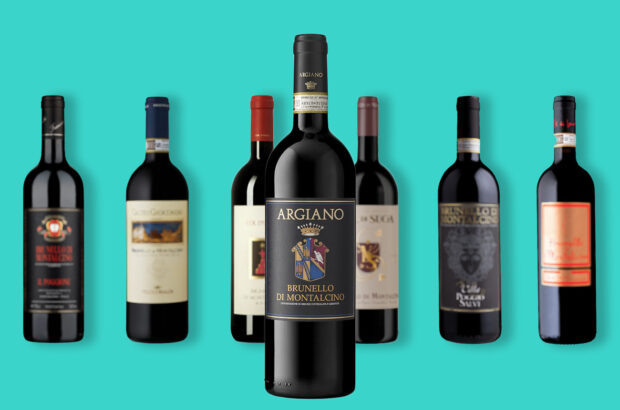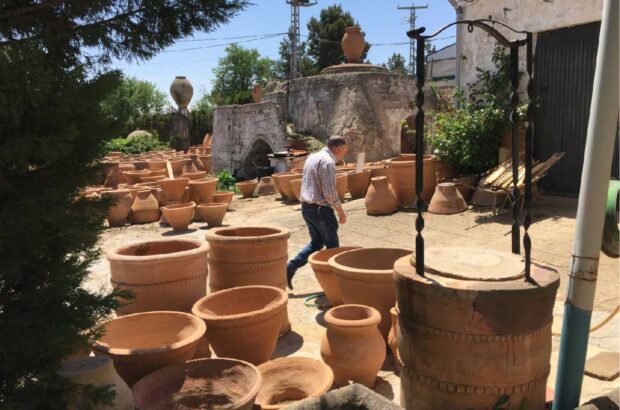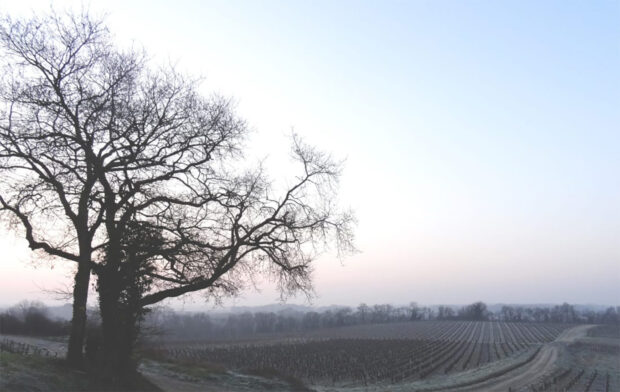- Who could dislike a state where most of the (male) winemakers have beards and the spirit of Woodstock wafts on the breeze like wacky backy?
- Its appellations are strictly defined and its labelling requirements are some of the most stringent in the world.
- The climate doesn’t seem to deter would-be vignerons, whose number has more than doubled in the last decade.
- Rogue Valley is known as the ‘Bordeaux of Oregon’.
‘Watch out for the tie-dye,’ a Washington winemaker told me as I set off from Walla Walla for Portland, Oregon. ‘They still wear sandals and listen to Joan Baez down there.’ Oregon’s reputation as a haven for hippies may be exaggerated, but it’s a remarkably tolerant, laid-back kind of place. Who could dislike a state where most of the (male) winemakers have beards and the spirit of Woodstock wafts on the breeze like wacky backy?
Oregon’s vineyards owe a debt to the sixties. The state’s winemaking pioneers – Richard Sommer of Hillcrest Valley Vineyard, Dick Erath and Cal Knudsen of Knudsen-Erath (now Erath Vineyards), David Lett of Eyrie and Dick Ponzi of Ponzi Vineyards – came to the Umpqua and Willamette valleys inspired by the mood of that radical decade. Ponzi was typical of the so-called ‘boys up north’, a successful mechanical engineer who got bored of the corporate ladder and took the risk of moving with his family to Oregon.
For many Oregonians, wine is still about lifestyle as much as making money; this may explain why so many of the state’s 120 wineries cultivate fewer than four hectares (ha). (Large wineries are far more common in Washington and California. Oregon’s big boys – King Estate, Erath, Oak Knoll, Rex Hill, Sokol Blosser, Duck Pond and Willamette Valley Vineyards – would look pretty puny alongside a Gallo, a Mondavi or a Columbia Crest.) All in all, there’s something engagingly ‘alternative’ about the Oregon wine industry, a business which nurtures characters like John Paul of Cameron and Myron Redford of Amity Vineyards. Where else but in Oregon would a leading winemaker (Domaine Drouhin’s Bill Hatcher) tell you that ‘writing poetry is my raison d’être and my day job permits me to do it’?
Easy-going they may be, but Oregon’s winemakers take the stuff in the bottle extremely seriously. Oregon has some of the oldest wine legislation in America, with strict laws which date back to 1977. Its appellations are strictly defined and its labelling requirements are some of the most stringent in the world. Oregon wine must contain at least 90% of the stated variety (75% in the case of Cabernet Sauvignon, presumably to give Merlot a look-in) and must come entirely from the stated appellation. This, as we shall see, can be a drawback in a difficult year like 1997, when winemakers might have welcomed a few blending options.
Oregon’s 3,125-odd ha of vineyard are mostly planted on the volcanic slopes of the North Willamette Valley, particularly in the Eola Hills and the Red Hills of Dundee. The region’s 1,958ha overwhelmingly outnumber those of the South Willamette Valley (396ha), the Umpqua Valley (217ha), Rogue Valley (267ha) and the Columbia and Walla Walla valleys (275ha). Why is this? Proximity to Portland must be part of the answer, but so is a marginal climate which is capable of producing some of the most complex burgundy and Alsace-style wines outside France. The problem, as with all such climates, is that is doesn’t do it every year.
The North Willamette Valley is the wettest of Oregon’s appellations, with nearly 40 inches of rain a year. This falls mainly, but by no means exclusively, between November and April. ‘The problem with the rainfall here is that it’s so irregular,’ says Rollin Soles of Argyle. ‘Some years you can go 100 days with no rain at all in July, August and September. In others, it can be pretty wet. We use irrigation when we have to in dry years.’ Soles says that North Willamette Valley producers have to be good viticulturists to make good wine. ‘It’s a no brainer in most of California and Washington; here we have to work hard so that our vines can absorb all the available heat and sunlight. Your vineyards have to be on the sunnier slopes, otherwise you’d never get anything ripe.’
Only certain varieties are suited to northern Oregon’s cool climate. ‘You couldn’t get Cabernet Sauvignon to turn pink here,’ says Soles. Still, the climate doesn’t seem to deter would-be vignerons, whose number has more than doubled in the last decade. What do they grow? Chardonnay, Riesling and Pinot Gris are all popular, and you can also find Gamay, Pinot Blanc and Gewürztraminer, but the grape of choice is Pinot Noir. ‘There are 120 wineries in this state and I can’t think of one that doesn’t make Pinot Noir,’ says Pat Dudley of Bethel Heights. ‘It’s our grape.’
It certainly is, accounting for nearly 1,250ha of the state’s vineyards. Oregon hosts an annual International Pinot Noir Celebration in McMinnville, attended by many of the world’s most famous Pinotphiles, and has achieved as much as anyone outside the Côte d’Or with this most temperamental of varieties. In Bethel Heights, Domaine Drouhin, Argyle, Cameron, Adelsheim, John Thomas, Chehalem, Rex Hill, Archery Summit, Eyrie, Evesham Wood, Beaux Frères and Eric Hammaker it has some truly excellent Pinot producers.
Many of the best winemakers have Burgundian connections, having studied, worked or stayed there over the years. ‘I’ve been to more wineries in Burgundy than I have in the United States,’ says David Adelsheim of Adelsheim Vineyard. ‘In Oregon, we continually try to learn what the Burgundians are up to see if it has any impact on what we do.’ Local producers have a coruscating example on their own doorsteps, too. Domaine Drouhin, arguably the best Pinot producer in the Northwest, is an Oregonian off-shoot of the famous Beaune négociant house. Drouhin isn’t the only out-of-state company to have taken an interest in Oregon. Californians such as Steve Girard of Girard Winery, Gary Andrus of Pine Ridge, William Hill of William Hill Winery and Carl Doumani of Stag’s Leap have also invested here, as have the Australian Brian Croser (who set up the Dundee Wine Company and its Argyle brand in 1987) and the Champagne house, Laurent-Perrier.
Whatever appears on their owner’s passport, Oregon wines tend to be expensive. According to Bill Hatcher, half of the wine produced in Oregon sells at $30 or more a bottle. Myron Redford of Amity agrees that Oregon doesn’t have enough entry-level wines. ‘We’ve chopped off the bottom of the pyramid,’ he says. This isn’t necessarily true – good value wines are produced by the likes of Willamette Valley Vineyards, Duck Pond, Elk Cove and Henry Estate – but there aren’t many cheap Oregon Pinots around.
Do the wines stack up? In the past, too many Oregon Pinot Noirs tasted thin and one dimensional to me. But on a recent visit, I was much more impressed. The improvements are due to the new Pommard and Dijon 114, 115, 116 and 777 clones which have been planted in the last decade, but also to the skill and experience of the local winemakers, who have become much better at extracting colour and weight from their grapes.
The clonal issue is even more pertinent where Chardonnay is concerned. For years, Oregon has struggled with a California clone called 108 which is badly suited to its marginal climate, largely because it ripens so late. In a cold vintage like 1995, 108 produced some very acidic wines. In recent years, only 1992 and 1994 have been good harvests for Chardonnays made from 108; otherwise, it’s been very touch and go. Not everyone dismisses 108 completely, mind you. ‘There have been some good Chardonnays made from 108,’ comments Luisa Ponzi of Ponzi Vineyard, ‘but it’s taken a lot of work in the vineyard and the cellar’. ‘If you treat it like a lady,’ adds Bill Hatcher, ‘it acts like a lady’.
Still, in common with many other producers, Drouhin is busy planting Dijon 75, 76, 95 and 96 clones in the search for riper, broader and more concentrated Chardonnays. Work with new clones is in its initial stages, so the results have only been apparent since the 1994 vintage. But this is the way ahead in Oregon. According to Doug Tunnell of Brick House Vineyards: ‘In the broadest perspectives, the original pioneers started out trying to figure out which were the appropriate varieties. The Pinots and Chardonnay are right for here. Now the process is all about choosing the right clones. Which Chardonnay and which Pinot Noir for which site?’ Cheryl Francis of Chehalem says that ‘the Dijon clones are starting to turn Oregon Chardonnay around’. Significantly, they have already become a selling point. Chehalem, like Ponzi, Argyle, Brick House, Erath, Elk Cove, Domaine Drouhin and others makes a feature of its Chardonnay’s new clone origins on its labels.
The Willamette Valley may be the historic centre of the Oregon wine industry, but what of the future? ‘Oregon is only 25 years old,’ says Lynn Penner-Ash of Rex Hill. ‘We’ve achieved some phenomenal things in that time, but we’ve still got a huge amount to learn about our region.’ As well as introducing new and better clones, especially of Pinot Noir and Chardonnay, winemakers are starting to reassess less marginal Oregon appellations. The Rogue and Umpqua valleys, Walla Walla and the Columbia Valley (the last two areas shared with Washington State) are becoming increasingly important as more reliable grape sources than the Willamette Valley. Joe Dobbs of Willamette Valley Vineyards is surely right to point out that ‘the Dundee Hills aren’t the only place to grow grapes in Oregon’.
Of the non-Willamette appellations, those of the Columbia River Region are something of an anomaly. Unlike Oregon’s other regions, they are situated on the eastern side of the Cascade Mountains, where the climate is well-suited to red Bordeaux varieties, thanks to much higher sunlight hours and very low rainfall. Not all of the grapes grown here are fermented in Oregon. For example, the Seven Hills area of the Walla Walla Valley sells much of its fruit to star Washington producers such as Leonetti and L’Ecole 41.
The Umpqua Valley is really a series of valleys to the south of Eugene. It is warmer than most of the Willamette Valley, but the influence of the Pacific can send the temperature tumbling at night. Still, it’s drier than its northerly neighbour and, in the right place, can produce decent Cabernet Sauvignon, Dolcetto, Syrah and Zinfandel as well as Sauvignon Blanc, Chardonnay, Pinot Noir and Riesling. The best-known names in Umpqua are Hillcrest Vineyard and Henry Estate, the home of the innovative viticulturist, Scott Henry.
The vineyards of southern Oregon, especially Rogue Valley close to the border with California, have greater potential in my view. Lynn Penner-Ash says that Rogue is not ideal for Pinot Noir – ‘you get nice maturity in your grapes, but the fruit doesn’t have the layers of complexity I’m after’ – but concedes that it has the potential to succeed with other varieties. Rogue is known as the ‘Bordeaux of Oregon’, but there could be a future for Tempranillo, Syrah, Viognier and Sangiovese as well as Cabernet Sauvignon, Merlot and Cabernet Franc down here. Of the eight wineries based in Rogue, the best are Foris, Bridgeview and particularly Valley View Vineyards, whose 1995 Anna Maria Old Stage Merlot and 1994 Anna Maria’s Vintners Reserve (a blend of Cabernet Sauvignon, Merlot and Cabernet Franc with 52% Zinfandel) are very exciting indeed.
Rogue is also attracting attention from further north. ‘More and more Willamette Valley wineries are heading south to buy Syrah and Merlot,’ according to Joe Dobbs of Willamette Valley Vineyards, whose Quail Run reds give a good indication of what Rogue can achieve. David Adelsheim, who sources Merlot from Rogue’s Applegate Valley sub-region (the other two are the Illinois and Rogue River valleys) is less enthusiastic. ‘We make Merlot for commercial reasons only,’ he insists. ‘Rogue is 300 miles away and it’s hard to stay in touch with your vineyards from that distance.’
Fair enough. But wouldn’t Adelsheim have appreciated the chance, appellation rules notwithstanding, to blend Rogue Pinot with Willamette Pinot in 1997, a vintage he describes as ‘the worst I’ve ever seen here’? ‘You’d end up with something which tasted of the variety, but not of anything specific.’ He’s probably right, too. Oregon has made its name with Burgundian and Alsatian varieties, especially Pinot Noir, and that’s not going to change in a hurry. But if I were planting a vineyard in Oregon today, the chance to do so in a warmer, less marginal climate than the Willamette Valley would be very tempting indeed.











